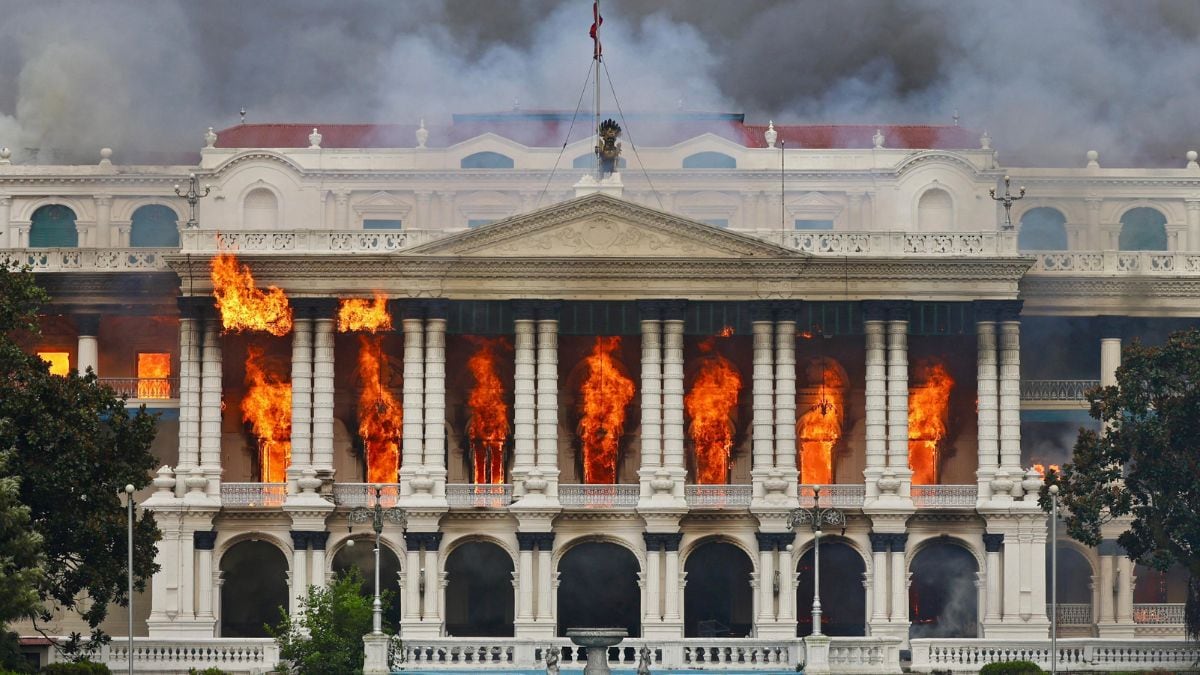International rescue teams and relief supplies began arriving in Nepal’s devastated capital Monday to help terrified and homeless survivors of the giant quake that has killed more than 3,200 people. Equipped with heavy cutting gear and accompanied by sniffer dogs, rescue teams were landing round-the-clock at the country’s only international airport on the outskirts of Kathmandu, the normally vibrant capital which has been devastated by Saturday’s 7.8 magnitude quake. Officials say more than 3,300 people are now known to have died, including 3,218 in Nepal – making it the quake-prone Himalayan nation’s deadliest disaster in more than 80 years. [caption id=“attachment_2214180” align=“alignleft” width=“380”]  Associated Press[/caption] Around 90 people have been killed in neighbouring countries, including at least 67 in India and 20 in China. The earthquake also triggered an avalanche on Mount Everest which buried part of base camp and killed at least 18 people. Aftershocks triggered fresh avalanches there on Sunday even as helicopters evacuated some of those worst injured the day before. Hundreds of foreign mountaineers had gathered at the world’s highest mountain at the start of the annual climbing season, and the real scale of the disaster there has been impossible to evaluate with communications all but cut off. With much of Kathmandu lying in ruins, tens of thousands of residents spent the night slept out on the streets, in makeshift tents fashioned from plastic sheeting that did little to protect them from heavy overnight rains. With the ground still regular shaking from nerve-shredding aftershocks, many endured a sleepless and miserable night. “We don’t have a choice, our house is shaky. The rain is seeping in but what can we do?,” said 34-year-old shopkeeper Rabi Shrestha as he camped out on the roadside. “I don’t know why the gods want us to suffer like this.” The situation has been exacerbated by power cuts and the country’s cell phone network is at breaking point. The Nepalese government said it was stepping up efforts to help remote areas closer to the epicentre of the quake. “Our focus is on rescue,” home ministry spokesman Laxmi Prasad Dhakal told AFP. “In far-flung areas, a larger helicopter will be stationed in the regional headquarters and smaller ones will shuttle with survivors.” Announcing the latest death toll in Nepal, a top disaster official said that emergency crews would also step up their efforts to rescue those trapped in high-rise buildings which pancaked on Saturday. “Our efforts today will also be focused on finding survivors in areas where big buildings have collapsed,” Rameshwor Dangal, who heads the home ministry’s national disaster management division, told AFP. The historic nine-storey Dharahara tower, a major tourist attraction, was among the buildings brought down in Kathmandu Saturday. Police said around 150 people were thought to have been in the tower at the time of the disaster, based on ticket sales. “At least 30 dead bodies have been pulled out. We don’t have a number on the rescued but over 20 injured were helped out,” local police official Bishwa Raj Pokharel told AFP. AFP
With much of Kathmandu lying in ruins, tens of thousands of residents spent the night slept out on the streets, in makeshift tents fashioned from plastic sheeting that did little to protect them from heavy overnight rains.
Advertisement
End of Article
Written by FP Archives
see more


)

)
)
)
)
)
)
)
)



